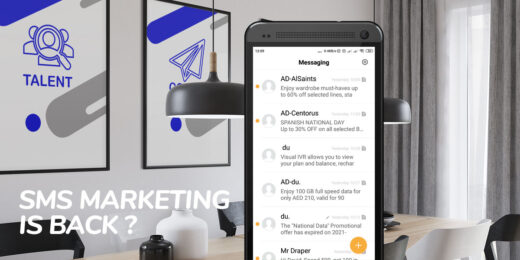What (Who) do you sponsor?
It’s an interesting question for a brand who is looking to engage a marketing leader like a fractional CMO. The answer to that question says a lot about the sophistication of the marketing strategy.
I’m not talking about sponsorship of a trade event, not talking about the relative merits of being the lanyard sponsor at a conference or networking lunch sponsor number 5. I’m talking about sponsorship of sports or the arts.
Sponsorship is still misunderstood by many marketers and rights holders. Sponsorship is not putting a logo on a racing yacht or a Formula 1 car and counting the number of times it might be seen. Sponsorship is a platform for integrated stakeholder management, marketing and communications. It’s about story-telling, content creation and influence. It’s about building relationships, research and development and brand association. It’s about experience and engagement.
Choosing which property to sponsor requires a deep understanding of your stakeholders, your value proposition and your messaging, because you can’t be everything to everyone.
5 Sports Sponsorship Myths
Sports sponsorship has long been a strategic marketing activity for brands aiming to connect with diverse stakeholder groups. From grassroots events to the world’s biggest sporting spectacles, companies invest heavily to align themselves with athletes, teams, and competitions. However, many myths still surround the concept of sponsorship. Let’s debunk five of the most common myths about sport sponsorship.
Myth 1: More is Better
Marketing as a profession has become obsessed with ‘growth’. OKRs and KPIs are based on the concept of more is better – More likes, more views, more traffic…
There are still people who sell sponsorship on eyeballs. The pitch decks contain mind-boggling numbers – attendees, TV viewership figures, number of articles in the newspaper. In fact, sponsorship effectiveness depends on relevance, audience alignment, and the brand’s positioning. What’s the point of promoting to 195 million customers if you only need 195 or 19? Focusing on strategic partnerships with a strong narrative creates a more meaningful connection with stakeholders. You don’t even need to have your logo on the boat or car for a sponsorship campaign to be successful.
Imagine… you don’t have to imagine, this is a real example. A computer company was the ‘official supplier’ of high-end CAD workstations for a Formula 1 team. At the time, the team was owned by an auto manufacturer whose demand for high-end CAD workstations would represent a significant order. Demonstrating that the machines could be used by the F1 designers and engineers was a great way to showcase their performance. When it came time for the auto manufacturer to choose a vendor of computers, the team would have significant influence in the decision. But the computer company’s logo was not visible on the car.
Sponsorships might be aimed at different stakeholders e.g. employees. Sponsorship can be used to align international teams around shared goals through experiences and storytelling. It doesn’t matter how many people see the logo on the car or boat or cycling jersey, as long as those people are aligned behind the objectives.
Myth 2: People Remember Who the Sponsors Are / Were
Many brands believe that simply having their logo on a jersey or a car or boat or surfboard is enough for the audience to recall their involvement. This couldn’t be further from the truth.
The reality is that consumers often struggle to remember who sponsored a specific event or team unless it’s reinforced through activation, storytelling and repeated association. Studies show that brand recall from passive sponsorship exposure is remarkably low. It’s worse for big events where there is a lot of noise and a lot of sponsors competing for share of voice.
Sponsorship must be coupled with strong engagement strategies, whether through social media campaigns, experiential marketing, or constant repetition to build a lasting impression. Passive visibility is not enough to make a memorable impact.
Naming rights can also be used to improve recall and exposure. Name the sponsors of the Emirates New Zealand America’s Cup team and the sponsors of the American Magic team. The clue is in the name! However, naming rights are not always allowed by series promoters or event organisers.
Myth 3: Your Brand Will Be on the TV (for Free)
This is also a myth perpetrated by sponsorship salespeople. The ‘Media Value’ is the amount of money that it would have cost you to advertise on TV at a specific time. On some channels, like the BBC in the UK you can’t buy advertising during the news, so a mention of your brand is invaluable!
These media value numbers are inflated by using opaque metrics. Just because Sky TV is in 4.2 million households in the UK, it doesn’t mean that 4.2 million people are watching the sailing on channel 543 at 1:30am on a Tuesday.
It used to matter, because people used to watch TV. Now people are more likely to watch events live on YouTube or some other online channel. This is good. While the actual audience might be lower, people who seek out a specific event are more engaged and infinite repeats mean that your brand can be seen over and over again and not just when it was broadcast on linear TV. Social media is more engaging than TV and should be used heavily to rebroadcast footage and other content to fans and stakeholders.
Myth 4: Activation is Included
One common mistake new sponsors make is assuming that the sponsorship deal will automatically include activation – the process of bringing the sponsorship to life through marketing campaigns and audience engagement.
Sponsorship packages generally provide the rights to use the association with the property. There will be a list of benefits that the sponsorship money provides for, but it does not include activation.
The budget for activation of a sponsorship should be at least the same as the sponsorship rights themselves. Without activation, without spending money to leverage the rights, no-one will even remember your brand was there.
Myth 5: Sponsorship is Expensive
There’s a widespread belief that sports sponsorship is only for big brands with massive budgets. While it’s true that top-tier sponsorships in the world’s most famous sporting events can be costly, there are plenty of affordable and scalable opportunities for brands of all sizes.
Sponsorship opportunities exist at every level, from local grassroots events to niche sports, and not all of them come with an astronomical price tag. Brands can start small, focusing on sponsorships that align with their budget and audience. There are even in-kind sponsorships available. Often an ‘Official Supplier’ will provide products and services for free, or at a significant discount, reducing the costs to compete and allowing cash to be spent on other things – like winning.
SIGN UP FOR OUR NEXT MASTERCLASS
Want to know more? Are you a Fractional CMO who wants to add sponsorship to your marketing tool-kit? Are you a brand that struggles to create engaging and authentic content? Are you looking to influence a diverse group of stakeholders?
Events are planned for the UK, UAE, USA and Australia in coming months.




